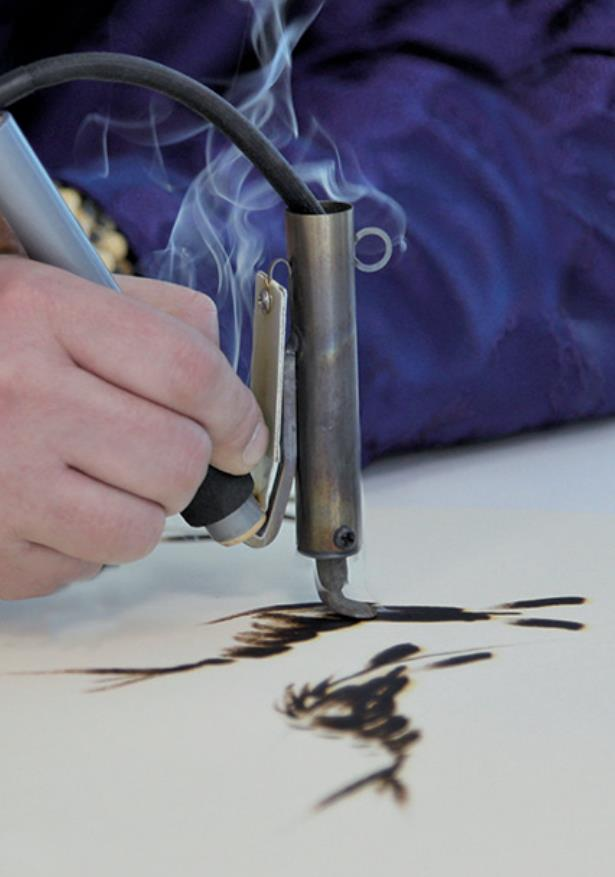Red-hot soldering iron and thin rice paper are never compatible with one another, yet what art treasure can be created with both?
Pyrogragh, known as “fire embroidery” or “fire painting” in ancient time, is a way of painting with red-hot soldering iron leaving brand on certain objects by applying iron as pen and fire as ink. According to historical record, pyrograph, originating from West Han Dynasty and flourishing during East Han Dynasty, was the treasure of traditional Chinese art and regarded as “a unique in China”.

Li Ruiqun, inheritor of pyrograph, Liaoning’s intangible cultural heritage, followed his father to learn pyrograph since an early age and participated in international cultural exchanges for multiple times, with his creations of rice paper pyrograph winning awards both at home and abroad.
In Li Ruiqun’s workshop, he is demonstrating the techniques of pyrograph to his students. Holding a soldering iron pen with a red-hot nib of eight hundred degrees Celsius, Li Ruiqun draws quickly back and forth on the rice paper, on which puffs of white smoke soon rise and later images of two mighty black prawns appear.

According to Li Ruiqun, his father exposed him to pyrograph quite often so he grew fond of it since an early age. In 1970s and 1980s, with the increasing popularity of pyrograph on wardrobes and other furniture, many people interested in it came to learn pyrograph from Li Wenkui, Li Ruiqun’s father. Some even brought a stump so that the surface could be shaved off in case of any failure just for more times of practice. Having witnessed the inconvenience brought by the plank, Li Wenkui then created rice paper pyrograph to make it easier for students to learn and practice.

Despite the gradual fade of pyrograph since 1990s, Li Ruiqun still stuck to it for his love and passion. In recent years, he has established many bases for pyrograph teaching, with 48 lineage disciples and nearly 100 thousand students from home and abroad.
Li Ruiqun said, “For the development of pyrograph, what we inheritors have to do is not just persistently hone our skills and enrich expression forms, but also provide people with more access to it and its stories behind. With the efforts of us inheritors, I believe, pyrograph will certainly regain its glory.”
